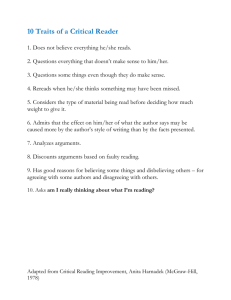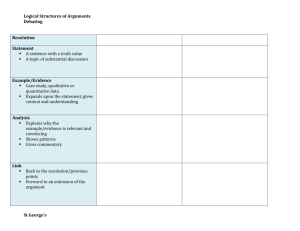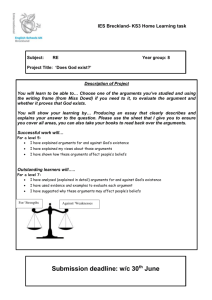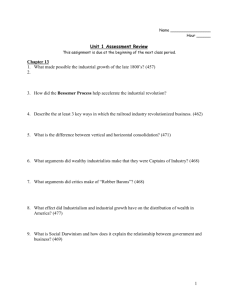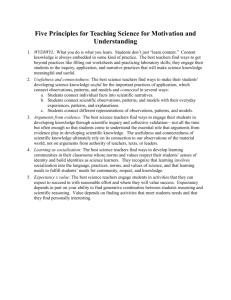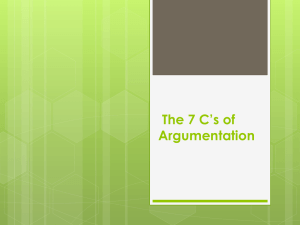Fundamental Principles of Debating the Extemporaneous Form
advertisement
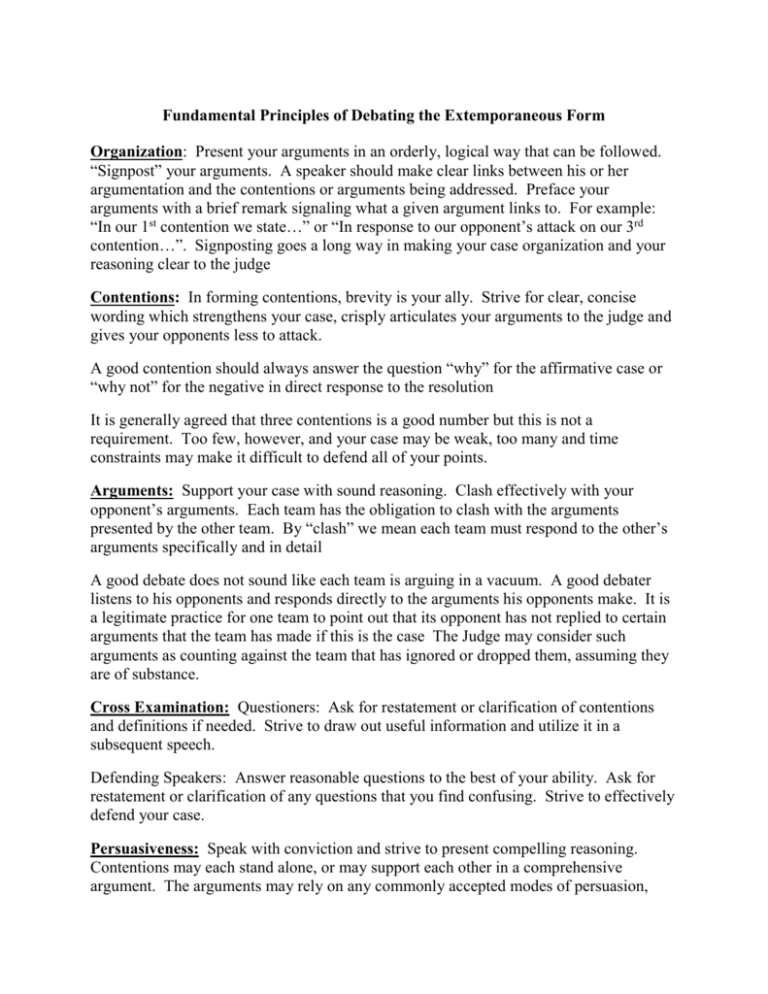
Fundamental Principles of Debating the Extemporaneous Form Organization: Present your arguments in an orderly, logical way that can be followed. “Signpost” your arguments. A speaker should make clear links between his or her argumentation and the contentions or arguments being addressed. Preface your arguments with a brief remark signaling what a given argument links to. For example: “In our 1st contention we state…” or “In response to our opponent’s attack on our 3rd contention…”. Signposting goes a long way in making your case organization and your reasoning clear to the judge Contentions: In forming contentions, brevity is your ally. Strive for clear, concise wording which strengthens your case, crisply articulates your arguments to the judge and gives your opponents less to attack. A good contention should always answer the question “why” for the affirmative case or “why not” for the negative in direct response to the resolution It is generally agreed that three contentions is a good number but this is not a requirement. Too few, however, and your case may be weak, too many and time constraints may make it difficult to defend all of your points. Arguments: Support your case with sound reasoning. Clash effectively with your opponent’s arguments. Each team has the obligation to clash with the arguments presented by the other team. By “clash” we mean each team must respond to the other’s arguments specifically and in detail A good debate does not sound like each team is arguing in a vacuum. A good debater listens to his opponents and responds directly to the arguments his opponents make. It is a legitimate practice for one team to point out that its opponent has not replied to certain arguments that the team has made if this is the case The Judge may consider such arguments as counting against the team that has ignored or dropped them, assuming they are of substance. Cross Examination: Questioners: Ask for restatement or clarification of contentions and definitions if needed. Strive to draw out useful information and utilize it in a subsequent speech. Defending Speakers: Answer reasonable questions to the best of your ability. Ask for restatement or clarification of any questions that you find confusing. Strive to effectively defend your case. Persuasiveness: Speak with conviction and strive to present compelling reasoning. Contentions may each stand alone, or may support each other in a comprehensive argument. The arguments may rely on any commonly accepted modes of persuasion, such as logic, examples, evidence, scientific theory, practicality, benefit and harm, morality, and so forth Presentation: During your speeches, address only the judge, not your opponents. Sustain eye contact with the judge and speak with conviction. Use your speaking time effectively; try to use all of the time allotted to you without being overly repetitive. Civility: Be polite and respectful. You may be emphatic but not rude.
